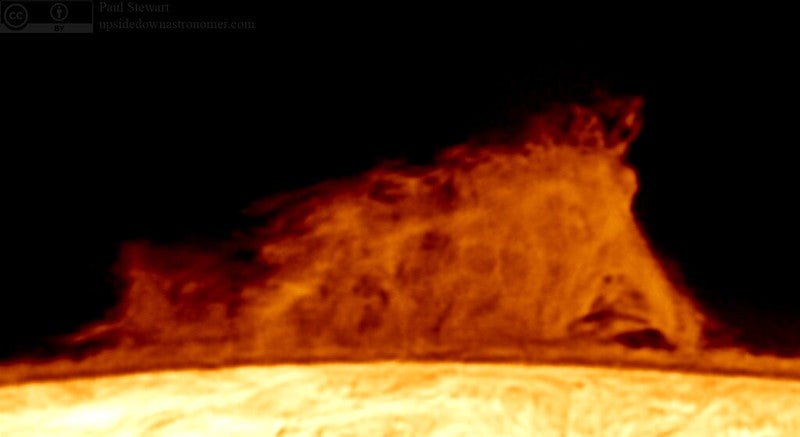
Credit: Paul Stewart
Viewing the Sun is always a great idea, provided you do it safely with the proper filter. For quick glances without a telescope, pick up No. 14 welder’s glass from a welding or builder’s supply store. Shade No. 14 is specialized glass, so don’t be surprised if it’s a special-order. Count on spending about $10 for a 2″ x 4¼” filter, the size that usually fits into a set of welder’s goggles. Be sure to hold it in front of your eyes, covering them completely, before looking at the Sun.
If you want to safely view the Sun through binoculars or a telescope, check out the ads here and in the magazine for glass or mylar solar filters. These filters slide snugly over the front opening of a scope or a pair of binocs. When placing your order, be sure to have the outside diameter measurement handy.
Mylar filters, which cost less than $100 for an 8-inch scope, feature one or two layers of aluminum applied to a thin mylar. This type of filter also comes in the form of “sunglasses” you can slip over you eyes for quick views of the Sun.
A more expensive and durable alternative is a solar filter consisting of nickel and chromium or other metals coated onto a piece of glass. Images viewed with these filters typically appear yellow or orange, colors that are often more pleasing than the blue or green images produced by mylar and welder’s glass. For an 8-inch scope, plan on spending around $150 for a filter of this type.
The most expensive option is a hydrogen-alpha (H-alpha) filter. It isolates a particularly active wavelength on the visible surface of the Sun, known as the photosphere. This visual sweet spot lets us witness huge arcs of hot gas, called prominences, towering thousands of miles into space. The view doesn’t come cheap: H-alpha filters cost between $700 and $2,000, depending upon how finely the filter can be tuned to the H-alpha wavelength.
— JOHN SHIBLEY









